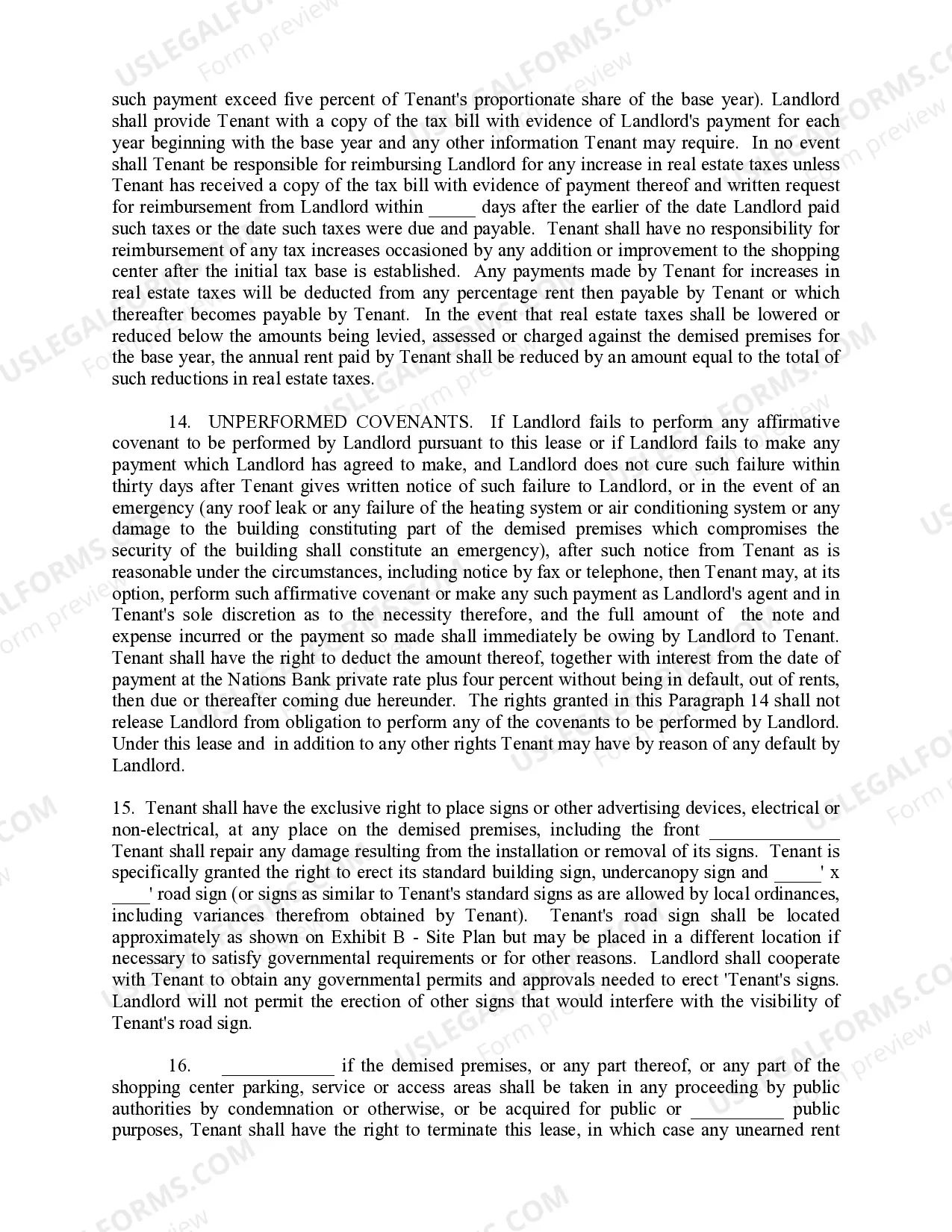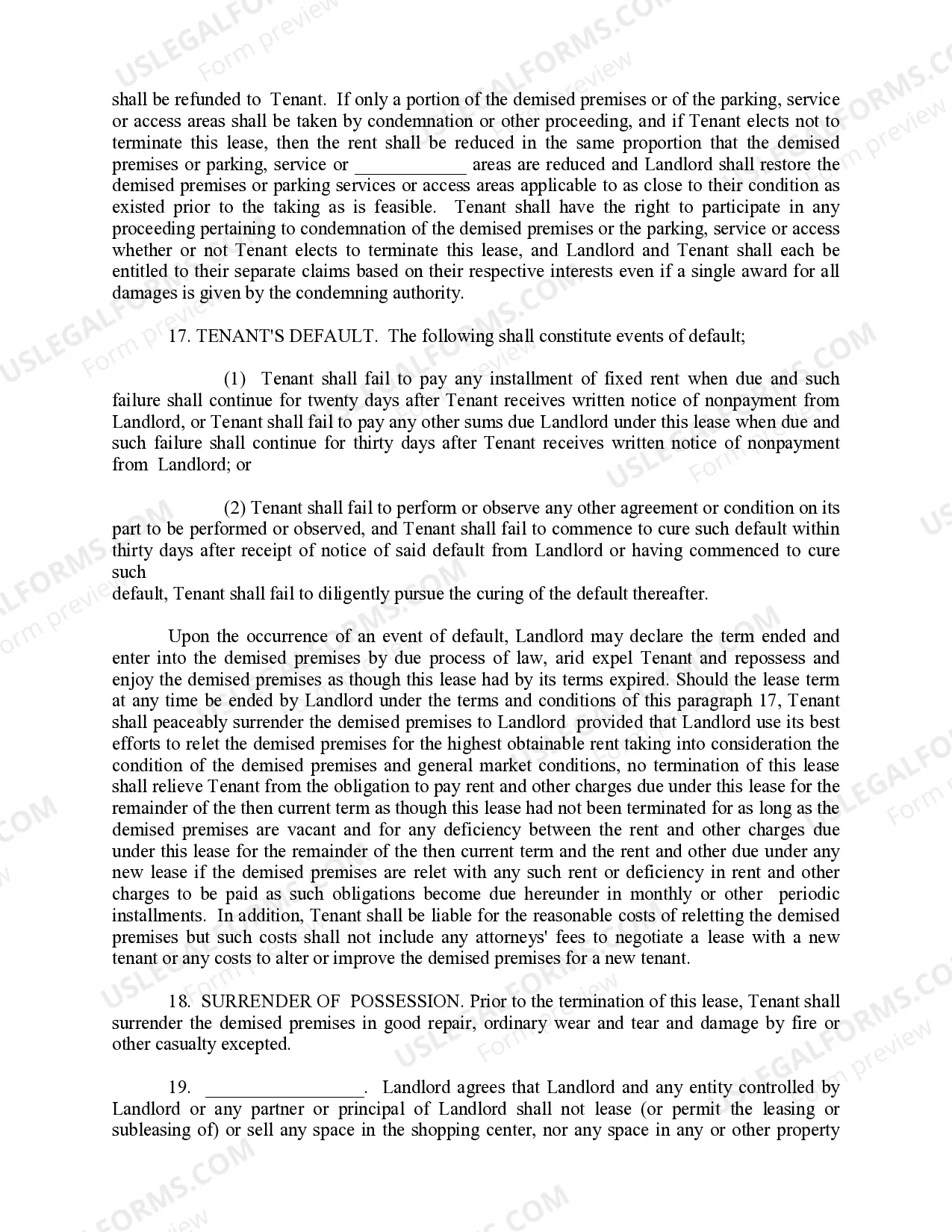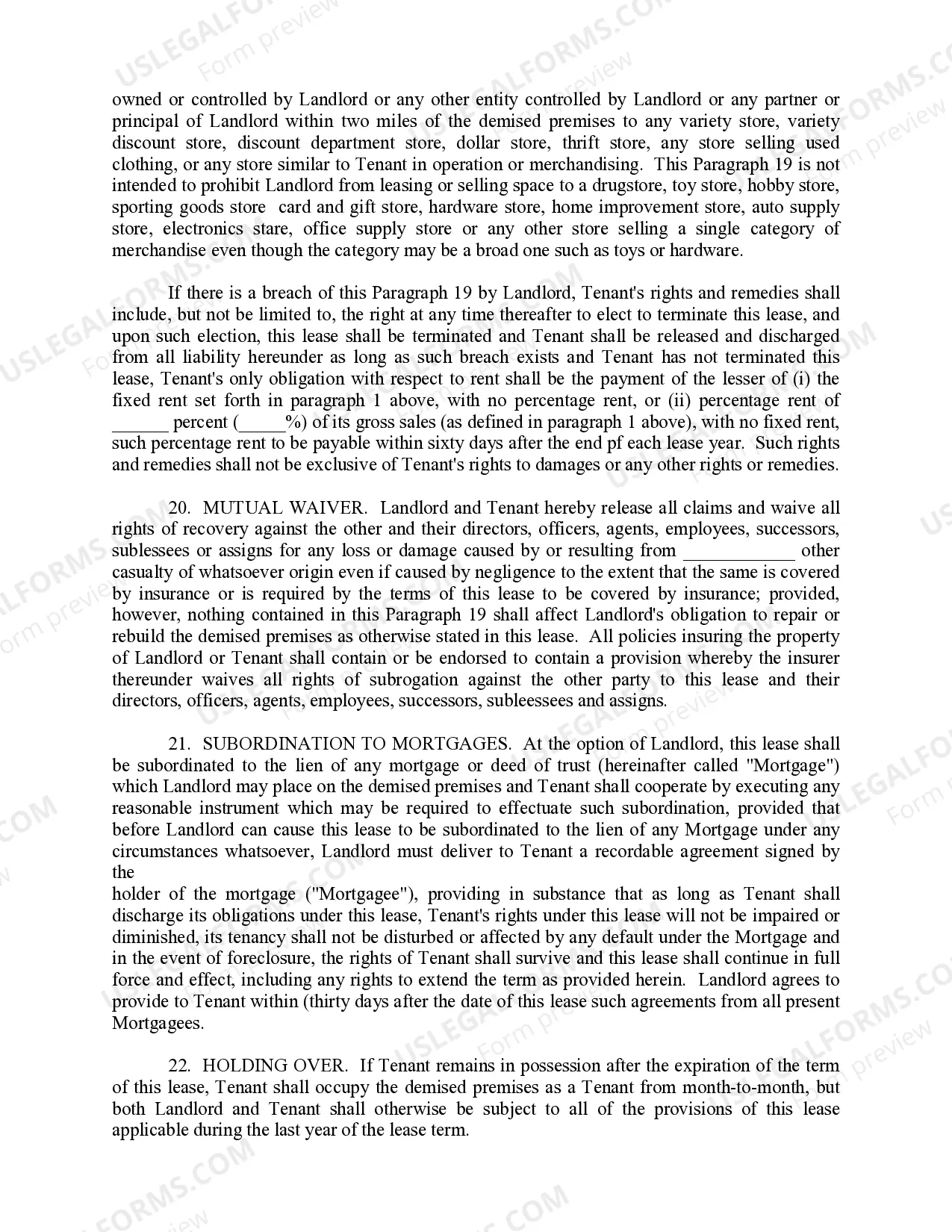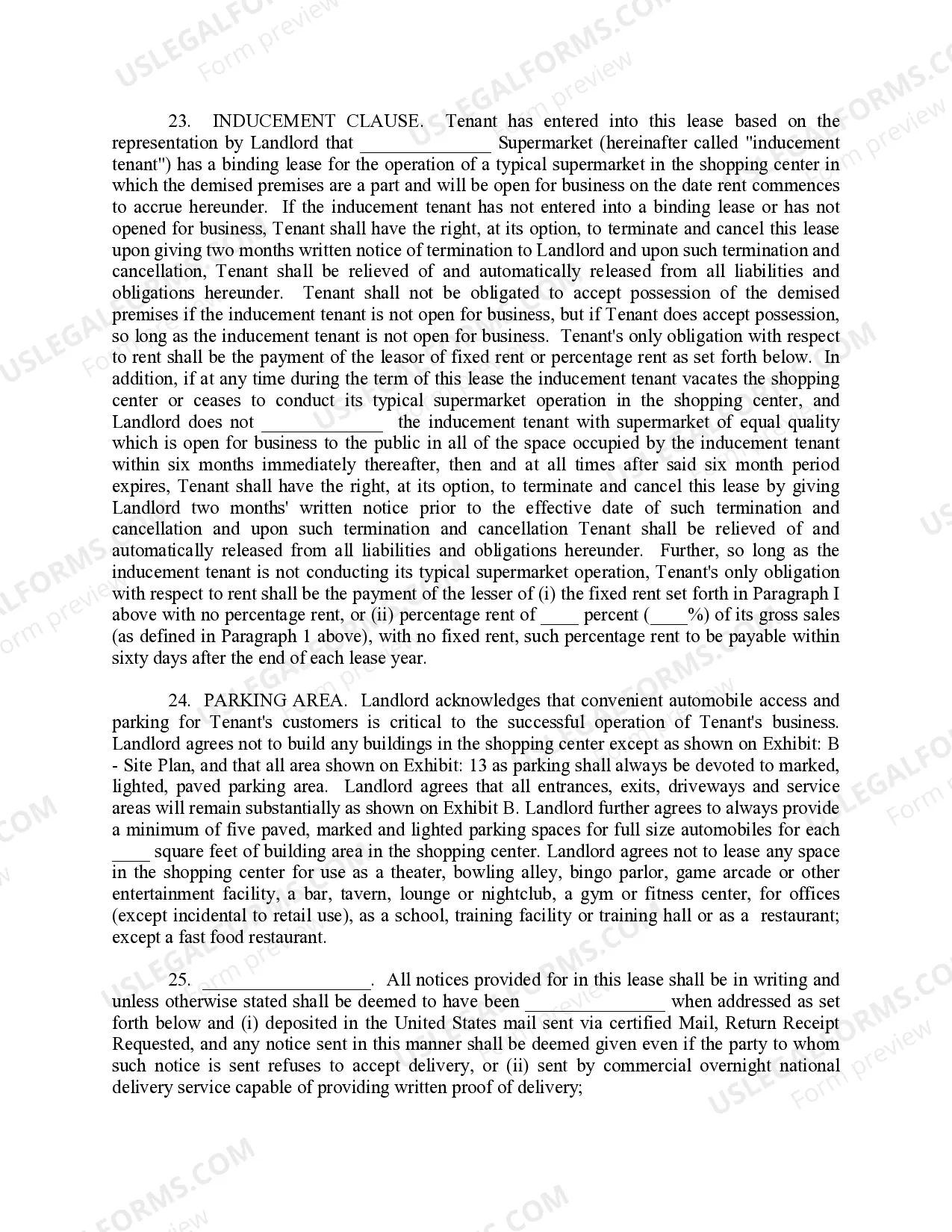Hawaii Percentage Shopping Center Lease Agreement: A Comprehensive Explanation + Types Introduction to Hawaii Percentage Shopping Center Lease Agreement: The Hawaii Percentage Shopping Center Lease Agreement is a legal contract entered into by a property owner or landlord, referred to as the lessor, and a retail business owner or tenant, known as the lessee. This agreement outlines the terms and conditions for leasing a commercial space within a shopping center located in Hawaii. The key feature of this lease agreement is the inclusion of a percentage rent clause, which allows the landlord to receive a percentage of the tenant's gross sales in addition to the base rent. Key Components of the Hawaii Percentage Shopping Center Lease Agreement: 1. Rent Structure: The agreement specifies the overall rent structure, including the base rent amount, which is often fixed, and the percentage rent. The percentage rent is calculated based on a predetermined percentage of the tenant's gross sales above a previously agreed upon breakpoint. 2. Breakpoint: The breakpoint refers to the minimum level of sales that the tenant must achieve before the percentage rent applies. This threshold acts as a protective measure for the tenant, ensuring that they only pay additional rent if their sales exceed a certain level. 3. Reporting and Auditing: The lease agreement includes provisions for the tenant to provide regular sales reports to the landlord, documenting the gross sales figures. The landlord may also have the right to audit the tenant's financial records to validate the accuracy of reported sales. 4. Lease Term and Renewal: The agreement outlines the initial lease term, which is typically a fixed number of years, as well as any renewal provisions allowing for an extension of the lease agreement upon the mutual agreement of both parties. 5. Common Area Maintenance (CAM) Charges: The tenant is usually responsible for paying a pro rata share of common area maintenance charges, covering the upkeep and maintenance of shared spaces within the shopping center, such as parking lots, walkways, and restrooms. Types of Hawaii Percentage Shopping Center Lease Agreements: 1. Gross Percentage Lease: In this type of lease, the tenant pays a base rent amount plus a percentage of gross sales above the breakpoint. The landlord is responsible for covering all expenses related to property taxes, insurance, maintenance, and utilities. 2. Net Percentage Lease: Unlike the gross percentage lease, the net percentage lease requires the tenant to contribute to the payment of a portion of the property expenses in addition to the base rent and percentage rent. These expenses may include property taxes, insurance, maintenance, and utilities. Conclusion: The Hawaii Percentage Shopping Center Lease Agreement is a specialized commercial lease that includes a percentage rent clause. It enables both landlords and tenants to share the risks and rewards of the tenant's business performance within a shopping center environment. By understanding the key components and types of this lease agreement, both parties can negotiate fair and beneficial terms that cater to their specific needs and objectives.
Hawaii Percentage Shopping Center Lease Agreement
Description
How to fill out Hawaii Percentage Shopping Center Lease Agreement?
Are you presently inside a position where you will need files for sometimes business or specific purposes almost every time? There are tons of authorized file layouts available on the net, but getting versions you can depend on isn`t easy. US Legal Forms gives 1000s of develop layouts, much like the Hawaii Percentage Shopping Center Lease Agreement, which can be created in order to meet state and federal specifications.
Should you be currently acquainted with US Legal Forms website and possess a merchant account, just log in. Afterward, you can acquire the Hawaii Percentage Shopping Center Lease Agreement web template.
If you do not provide an accounts and wish to start using US Legal Forms, adopt these measures:
- Obtain the develop you need and ensure it is for that appropriate city/state.
- Take advantage of the Preview switch to examine the shape.
- Browse the explanation to ensure that you have selected the correct develop.
- If the develop isn`t what you`re trying to find, take advantage of the Research field to discover the develop that meets your requirements and specifications.
- Once you get the appropriate develop, simply click Purchase now.
- Choose the prices prepare you want, submit the necessary information and facts to create your bank account, and pay money for your order making use of your PayPal or charge card.
- Decide on a practical document structure and acquire your version.
Find all of the file layouts you possess bought in the My Forms menu. You can obtain a extra version of Hawaii Percentage Shopping Center Lease Agreement at any time, if needed. Just select the essential develop to acquire or print the file web template.
Use US Legal Forms, one of the most extensive collection of authorized types, to save lots of time as well as stay away from errors. The service gives expertly made authorized file layouts that you can use for a selection of purposes. Make a merchant account on US Legal Forms and begin making your way of life easier.










